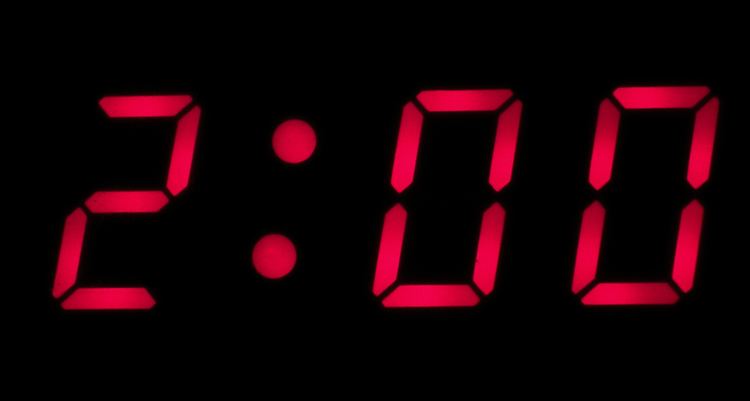 | ||
In the National Football League (NFL), the two-minute warning is given when two minutes of game time remain on the game clock in each half of a game, i.e. near the end of the second and fourth quarters. There is an additional two-minute warning in the rare event only two minutes remain in an overtime period. However, in the postseason, where games continue indefinitely if there is no score, there is no two-minute warning in the first overtime, but if the second overtime, or any subsequent even overtime, is still tied with two minutes remaining (which has never happened), there will be a two-minute warning. If the football is in play when the clock reaches 2:00, the two-minute warning is called immediately after the play concludes, when the ball is declared dead. The two-minute warning stops the game clock in all cases.
Contents
History
The origins are from the days in the NFL when the official game time was kept by a member of the officiating crew, with the stadium clock being unofficial. Its purpose was a checkpoint to ensure that the teams knew how much time remained in the game. Since the late 1960s the NFL stadium clock has been official, but by then television was an important factor in the NFL, so the two-minute warning was retained as a commercial break and to serve as "tension building" time, and thus has become an important part of the game's flow.
Rules
In addition to those practical purposes, gradually, some rules have evolved that are unique to the final two minutes of each half and overtime. There is no special event at the ends of the first and third quarters, aside from swapping end zones, so there is no two-minute warning then, only at the halves, except as implemented in Pro Bowls from 2014- 2016.
The two-minute warning in the fourth quarter is an important milestone in the game for a team that is in the lead and looking to run out the clock. If the leading team has the ball on first down with less than two minutes to go in the game and the opposing team has no timeouts remaining, the quarterback can often safely end the game by taking a knee three times in a row without risking injuries or turnovers. This is because at the end of each play, the offensive team can take up to 40 seconds to start running the next play.
10-second runoff
The following situations result in a 10-second game clock runoff if the team in possession of the ball is trailing or the game is tied and the team in possession of the ball has no timeouts remaining in that half. If there are 10 seconds or less left in the half or game, the half or game is ended by such runoff.
Injuries
If a player is injured and his team has timeouts remaining in that half, a timeout is automatically charged to that team to allow the injured player to be removed from the field. If a team is out of timeouts, they are allowed an otherwise-excessive "fourth timeout". However, to minimize the feigning of injuries to save game clock time, any subsequent injuries after the fourth timeout result in a five-yard penalty. In addition to an excessive timeout, there is a 10-second runoff (if it was an offensive player that was injured) or the play clock is reset to 40 seconds (if it was a defensive player).
Exceptions to the above include if the other team called a timeout immediately after the previous play to save time on the clock; the injury was caused by a foul by an opponent; or the previous play resulted in a change of possession, a successful field goal, or was a conversion attempt.
Other rules
Other football leagues
The CFL has a three-minute warning, while the Arena Football League, and other indoor gridiron football leagues have a one-minute warning.
